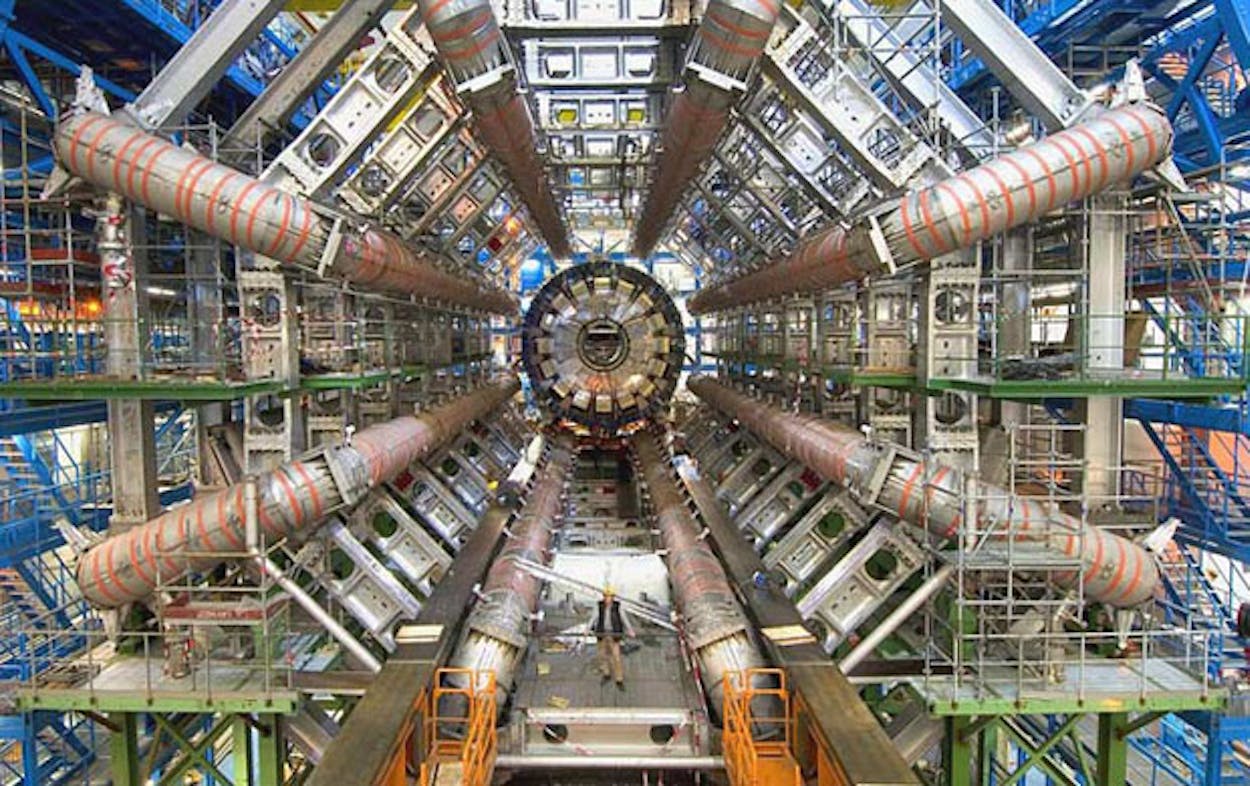Everyone, it seems, wants a piece of the “God” particle. At least two news outlets found Texas angles for the Higgs boson discovery at CERN.
A piece in the Texas Tribune lamented what could have been if a super collider proposed in the 1980s had been built in Waxahachie. Construction on the Superconducting Super Collider began in 1991, but was halted two years later after $2 billion had been spent on the project, Zoë Gioja and Hollie O’Connor reported. “If completed, it would have been larger in circumference and capable of producing higher energy than the [Large Hadron Collider], according to experts who worked on it,” they wrote.
Roy Schwitters, a physicist who was director of the SSC lab, said there was “no question” the Texas super collider would have found the particle, had it been built.
“This is the discovery everyone planned around,” Schwitters said. “It’s at the core of our current theories of what matter is and how it works. This was the high priority measurement to be made first thing out. There’s no question it would have happened.”
(And perhaps, in a parallel universe, the SSC was completed and Texas physicists were the ones bringing out the bubbly to toast their discovery.)
But, in this reality, the SSC was never built, so there must be another Texas connection to this story, right? Well, Joe Simnacher of the Dallas Morning News tracked down down three teams of physicists from the Metroplex “at the heart of the research” that led to the discovery in Switzerland.
“Professors and graduate students from Southern Methodist University, the University of Texas at Dallas and the University of Texas at Arlington were all working in Geneva on Wednesday when the identification of the basic building block of the universe was announced,” Simnacher wrote.
“It’s really exciting,” said Dr. Joe Izen, a physicist from UT-Dallas. “I get paid to do this.”
Need a refresher on just how huge this discovery is for science? Dennis Overbye waxed poetic about the particle in the pages of the New York Times:
Signaling a likely end to one of the longest, most expensive searches in the history of science, physicists said Wednesday that they had discovered a new subatomic particle that looks for all the world like the Higgs boson, a key to understanding why there is diversity and life in the universe.
Like Omar Sharif materializing out of the shimmering desert as a man on a camel in “Lawrence of Arabia,” the elusive boson has been coming slowly into view since last winter, as the first signals of its existence grew until they practically jumped off the chart.







